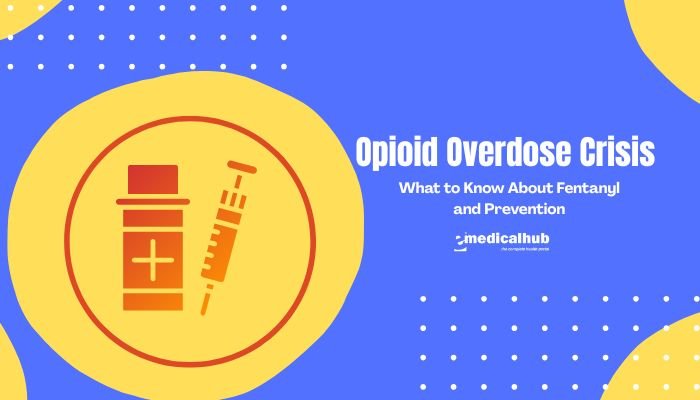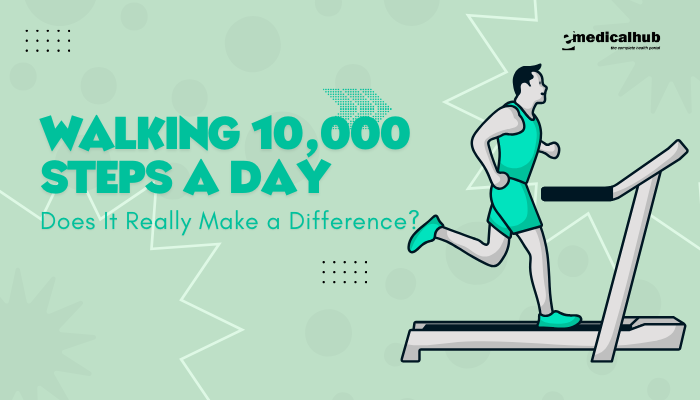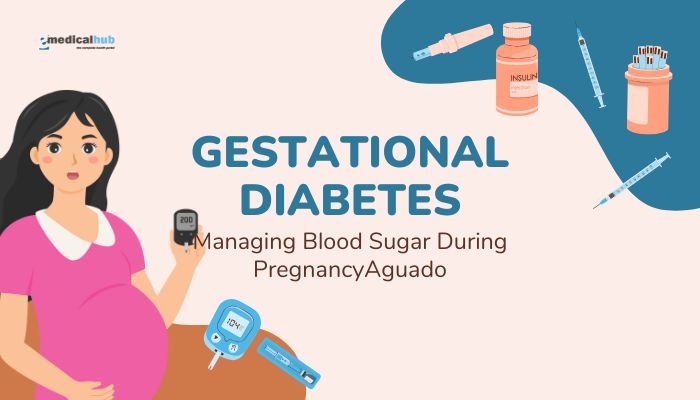Introduction
The opioid overdose crisis has become a defining public health emergency of the past two decades, leading to staggering rates of preventable deaths and immense community trauma. While prescription opioid misuse initially garnered attention, a newer, more lethal wave of synthetic opioids—especially fentanyl—has drastically amplified the crisis.
Highly potent and often illicitly manufactured, fentanyl is now driving the majority of opioid-related fatalities, changing the face of addiction and challenging the response strategies of healthcare providers, policymakers, and local communities.
This article will cover the basics of fentanyl—its medical uses and abuse, how it infiltrates drug supplies, and why it’s so profoundly dangerous. We’ll also explore how the evolving overdose crisis affects different demographics, how to recognize overdose symptoms, and the role of overdose-reversal drugs like naloxone.
Ultimately, understanding fentanyl’s potency and adopting evidence-based prevention measures are essential to curbing a crisis that touches nearly every corner of society, from major cities to rural heartlands.
The Opioid Crisis: A Snapshot
Historical Context
- Prescription Phase (1990s–2000s): Widespread prescribing of opioid pain relievers (like oxycodone, hydrocodone) for chronic pain led to escalated misuse and addiction. Misinterpretation of the risks combined with aggressive marketing fueled rising addiction rates.
- Transition to Heroin: As prescription pills grew expensive or less accessible, many individuals switched to heroin, cheaper and widely available on the illicit market.
- Third Wave: Synthetic Opioids: Starting around 2013, synthetic opioids, primarily fentanyl, began surging in overdose deaths. This shift triggered dramatic spikes in fatalities, often overshadowing other opioids.
Current Trends
- Record Overdose Deaths: Many countries, notably the US and Canada, continue to see record-high numbers of opioid-related overdoses, with synthetic opioids as the predominant factor.
- Polydrug Use: Fentanyl is frequently found mixed with other drugs like heroin, cocaine, or counterfeit pills, often unbeknownst to users.
- Geographic Spread: Although initially concentrated in certain regions, fentanyl-laced drug supplies have spread widely, impacting both urban centers and rural towns.
Why Fentanyl is Central to the Crisis
- Potency: Fentanyl can be 50 to 100 times stronger than morphine, making minor dosage errors lethal.
- Profit and Ease: Illicit producers can make cheaper, compact products. Small amounts go far, increasing traffickers’ profit margins while endangering consumers.
- Rapid Onset: Fentanyl’s quick effect fosters both intense highs and higher risk of respiratory failure.
Understanding Fentanyl
Legitimate Medical Uses
- Origins: Synthesized in the 1960s, fentanyl is a prescription opioid used for severe pain management, e.g., post-surgery or in advanced cancer cases.
- Formulations: Medically, it can appear as patches, lozenges, or IV forms. When administered under regulated conditions, fentanyl is a powerful analgesic that improves quality of life for acute or chronic severe pain.
Illicit Fentanyl
- Clandestine Production: Illegally made in labs (often in certain regions with limited oversight), then smuggled across borders or shipped globally in small parcels.
- Forms: Powder, pressed pills resembling prescription opioids or benzodiazepines, or laced in other drugs (heroin, methamphetamine).
- Dosing Nightmare: Because so little is needed for a potent dose, marginal miscalculations cause overdoses easily. Traffickers often mix fentanyl unevenly, leading to “hot spots” in a batch that can be fatal.
Analogues and Variants
- Carfentanil: Even more potent than fentanyl; used as a large animal tranquilizer. Tiny amounts can kill.
- Multiple Derivatives: Some analogues may evade legal controls or standard detection, complicating enforcement and toxicology.
Effects and Dangers of Fentanyl Use
Pharmacology
- Mechanism: Fentanyl binds to opioid receptors in the brain, dulling pain perception, boosting euphoria, but also depressing the respiratory drive.
- Risk of Dependence: Like other opioids, repeated exposure can lead to tolerance, dependency, and severe withdrawal.
Overdose Potential
- Respiratory Depression: The primary overdose cause. Fentanyl slows or stops breathing, leading to hypoxia and eventually cardiac arrest if untreated.
- Signs: Shallow or no breathing, pinpoint pupils, blue lips/skin, unresponsiveness, slowed heartbeat.
Potency Amplifies Risk
- Narrow Therapeutic Window: The difference between a dose that achieves euphoria and a fatal dose is extremely small.
- Unexpected Contamination: Users seeking heroin, cocaine, or even prescription pills may inadvertently ingest fentanyl-laced product, with no tolerance for it.
The Overdose Crisis Expands
Overdose Trends
- Exponential Rise: In countries like the US, synthetic opioid-involved overdose deaths soared from a few thousand annually in early 2010s to tens of thousands within a decade.
- Demographics: Initially, middle-aged white males from rust belt communities were widely affected, but the crisis now spans diverse racial, socioeconomic groups, and age ranges.
Cross-Cutting Implications
- Healthcare Systems: Overburdened by repeated overdose survivors needing acute care, plus long-term conditions (HIV, hepatitis C, endocarditis from IV drug use).
- Law Enforcement: Confronting complex trafficking networks, plus shifting from “drug bust” mentalities to “harm reduction” approaches.
- Stigma and Barriers: Fear of legal repercussions or moral condemnation can deter people from seeking help or carrying overdose reversal drugs.
Pandemic Complications
- COVID-19 Factor: Pandemic isolation, service disruptions, and economic distress led to surges in overdose rates, with limited access to in-person recovery programs or harm reduction sites.
- Supply Chain Shifts: Border closures changed trafficking routes, but synthetic labs adapted quickly, sustaining or even intensifying fentanyl supply.
Preventing and Recognizing an Overdose
Overdose Warning Signs
- Respiratory Distress: Slow, shallow, or stopped breathing.
- Pale, Clammy Skin: May turn bluish around lips or fingernails.
- Pinpoint Pupils: A classic opioid overdose clue.
- Loss of Consciousness: Person can’t be roused by shouting or sternal rub.
- Choking or Gurgling Sounds: Sometimes known as a “death rattle.”
Naloxone (Narcan)
- Mechanism: Naloxone is an opioid antagonist that quickly displaces opioids from receptors, reversing respiratory depression if administered in time.
- Availability: Many places encourage broad distribution (pharmacies, community programs), including over-the-counter or no-prescription access.
- Administration: Nasal spray or injection. People should call emergency services as well because re-narcotization can occur once naloxone wears off.
Calling for Help
- Emergency Protocol: If you suspect an overdose, call an ambulance immediately. Administer naloxone if available.
- After Overdose: Hospital evaluation is critical. Even if revived by naloxone, individuals need observation for recurrent respiratory depression or other complications.
Harm Reduction Strategies
Fentanyl Testing
- Test Strips: Inexpensive strips can detect fentanyl presence in a sample before use. They aren’t foolproof, but can deter consumption if fentanyl is found.
- Controversy: Some legal frameworks see drug-checking paraphernalia as encouraging use, but many public health officials endorse them as life-saving.
Supervised Consumption Sites
- Goal: Provide a safe, hygienic setting to consume pre-obtained drugs with medical staff on standby in case of overdose.
- Evidence: Reduces overdose deaths, prevents needle-sharing infections, offers a gateway to treatment.
- Challenges: Local or federal laws can hamper site establishment, but pilot programs in Canada and parts of Europe show positive outcomes.
Needle Exchange and Social Support
- Syringe Services: Minimizes spread of HIV, hepatitis C, and fosters trust with outreach workers who can connect users to health and social services.
- Peer Education: People with lived experience delivering nonjudgmental advice and resources.
Treatment of Opioid Use Disorder
Medication-Assisted Treatment (MAT)
- Opioid Agonists: Methadone, buprenorphine reduce cravings and withdrawal, supporting long-term recovery.
- Antagonists: Naltrexone blocks opioid receptors, preventing euphoria from future opioid use.
- Evidence: MAT is considered a gold standard, substantially lowering risk of relapse, overdose, and mortality.
Behavioral and Psychosocial Interventions
- Cognitive Behavioral Therapy (CBT): Addresses underlying triggers, negative thought patterns.
- Support Groups: NA (Narcotics Anonymous), SMART Recovery, or culturally specific programs can reinforce accountability and coping.
- Integrated Healthcare: Many success stories combine MAT with therapy, social support, and medical oversight.
Barriers to Treatment
- Stigma: Public misconceptions hamper willingness to seek help or to widely adopt MAT.
- Availability: Rural or underserved communities might lack clinics offering medication therapy or psychiatrists specialized in addiction medicine.
- Insurance Gaps: Coverage constraints for extended therapy or certain medications.
Policy and Community-Level Action
Addressing Social Determinants
- Economic Stability: Unemployment or poverty can push vulnerable populations toward substance misuse or hamper recovery.
- Education and Housing: Inadequate housing or educational gaps perpetuate cycles of despair, limiting prospects for stable living away from drug environments.
- Criminal Justice Reforms: Shifting from incarceration to treatment-based models for nonviolent drug offenses can help break the cycle of repeated arrests and relapse
Legislative Approaches
- Prescription Monitoring: Databases that detect “doctor shopping” or suspicious prescribing patterns of opioids.
- Control of Precursor Chemicals: International collaboration to track or restrict chemicals used in illicit fentanyl manufacture.
- Public Education: National campaigns on safe pain management, plus disclaimers about the dangers of street-obtained pills.
Community-Led Solutions
- Community coalitions: Partnerships between law enforcement, healthcare, social services, faith-based groups, and local leaders fostering joint responses to local overdose crises.
- Naloxone Training: Workshops for bar staff, librarians, teachers to respond effectively to overdoses.
- Youth Prevention Programs: Integrating substance misuse awareness in school curricula, equipping teens to resist peer pressure or handle stress.
The Future: Innovations and Ongoing Challenges
Safer Drug Supply Concepts
- Regulated Access: In some regions, providing pharmaceutical-grade opioids to addicted individuals (e.g., safe supply programs) is discussed to reduce fentanyl-laced drug harm.
- Pilot Trials: Vancouver, BC, tests alternative prescribing models for opioid-dependent patients to avoid black market substances.
Technology-Assisted Interventions
- Mobile Apps: Real-time overdose detection or location-based help can direct emergency services faster.
- Telehealth: Virtual MAT prescribing or counseling services can broaden rural coverage.
Shifting Mindsets
- Opioid Overdose as Public Health Priority: Recognizing overdose death is preventable, and embracing harm reduction can reframe the approach from punishment to compassion.
- Global Coordination: Countries sharing intelligence on supply chains, cooperating on public health interventions, fosters a more unified response
Conclusion
The fentanyl-fueled overdose crisis is a stark reminder of how quickly a drug market can evolve and how devastating the consequences are for individuals, families, and communities. Once predominantly overshadowed by concerns about prescription pills or heroin, fentanyl now stands center stage as the deadliest driver of opioid-related deaths. A trifecta of potency, availability, and clandestine production drastically compounds this lethal threat, requiring a strategic, multi-pronged approach.
Yet solutions exist. Widespread naloxone access, harm reduction initiatives, comprehensive treatment for opioid use disorder, and upstream interventions addressing socioeconomic disparities all provide hope. Greater public awareness about fentanyl’s potency and contamination risks can save lives, while legislative reforms ensure robust support for prevention and treatment. Ultimately, reversing the tide of the opioid crisis—and preventing the heartbreak of overdose—demands a sustained commitment to science-based policies, empathy for those who use drugs, and renewed dedication to addressing root causes. Through collaboration and unwavering resolve, we can turn a tragedy into a turning point, forging a future where far fewer lives are lost to opioid overdoses.
Frequently Asked Questions (FAQ)
- Is fentanyl only a concern for people who inject drugs?
- Not at all. Fentanyl is increasingly found in counterfeit pills (like fake Xanax or OxyContin), or laced in cocaine or methamphetamine. Anyone using illicit drugs, even occasionally, might unknowingly consume fentanyl.
- How does naloxone work if someone overdoses on fentanyl?
- Naloxone quickly displaces opioids from brain receptors, reversing the respiratory depression. Multiple doses may be needed for potent opioids like fentanyl.
- Can I get addicted to fentanyl if prescribed for pain?
- Like any opioid, there is a risk if misused or used long-term. But clinically supervised fentanyl for acute pain is generally safe. The crisis predominantly involves illicit versions.
- What’s the difference between carfentanil and fentanyl?
- Carfentanil is a fentanyl analogue roughly 100 times more potent than fentanyl. Even minuscule amounts can be deadly.
- I suspect an overdose but not sure. Should I use naloxone anyway?
- Yes. Naloxone has minimal adverse effects if administered to someone not experiencing an opioid overdose. When in doubt, err on the side of saving a life.
- If I or a loved one have an opioid addiction, where do we start for help?
- Consider consulting a healthcare provider about medication-assisted treatment (e.g., buprenorphine, methadone), counseling, or local harm reduction services. Helplines and local addiction clinics can guide you.
- Will stricter laws alone solve the fentanyl crisis?
- Enforcement can limit supply, but alone won’t address demand or psychosocial roots of addiction. A combination of prevention, treatment, harm reduction, and mental health support is crucial.
References
- Rudd RA, Seth P, David F, et al. Increases in drug and opioid-involved overdose deaths—United States, 2010–2015. MMWR Morb Mortal Wkly Rep. 2016;65:1445-1452.
- Gladden RM, Martinez P, Seth P. Fentanyl law enforcement submissions and increases in synthetic opioid-involved overdose deaths—27 states, 2013–2014. MMWR Morb Mortal Wkly Rep. 2016;65(33):837-843.
- Kuczyńska K, Grzonkowski P, et al. Abuse of fentanyl: An emerging problem? Forensic Sci Int. 2018;289:207-214.
- Scholl L, Seth P, Kariisa M, et al. Drug and opioid-involved overdose deaths—United States, 2013–2017. MMWR Morb Mortal Wkly Rep. 2018;67(5152):1419-1427.
- Centers for Disease Control and Prevention (CDC). Synthetic opioid overdose data. 2021.
- National Institute on Drug Abuse (NIDA). Naloxone DrugFacts. 2021.
- Reuter P, Pollack H. How drug enforcement affects drug prices. Addiction. 2012;107(4):804-818.
- Volkow ND, Frieden TR, Hyde PS, Cha SS. Medication-assisted therapies—tackling the opioid-overdose epidemic. N Engl J Med. 2014;370(22):2063-2066.
- Wakeman SE, Barnett ML. Primary care and the opioid-overdose crisis—buprenorphine myths and realities. N Engl J Med. 2018;379(1):1-4.
- Karamouzian M, Papamihali K, Graham B, et al. Known-fentanyl or unknown-fentanyl: an observational study exploring differences among people who use drugs. Int J Drug Policy. 2020;76:102628.
- Frank RG, Pollack HA. Addressing the fentanyl threat to public health. N Engl J Med. 2017;376(7):605-607.
- World Health Organization. Community management of opioid overdose. 2018.
- Harm Reduction Coalition. The benefits of supervised consumption services. 2020.
- Ciccarone D. Fentanyl in the US heroin supply: a rapidly changing risk environment. Int J Drug Policy. 2017;46:107-111.



